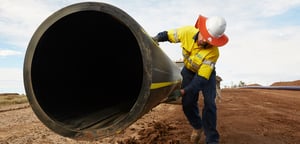
APGA Factsheets
Understanding the Megajoule: A Measure of Energy in Natural Gas

The Megajoule (MJ) is a unit of energy widely used in the scientific, engineering, and energy sectors. It is a metric measurement representing one million joules. To grasp its significance, let's break down the term further:
1. Joule (J):
The joule is the fundamental unit of energy in the International System of Units (SI). It is named after the English physicist James Prescott Joule, who played a pivotal role in the study of thermodynamics. One joule is defined as the amount of energy transferred when one newton of force acts over a distance of one meter. In simpler terms, it quantifies the energy required to move an object with a force of one newton through a distance of one meter.
2. Megajoule (MJ):
The prefix "mega" denotes one million units. Therefore, a megajoule is equivalent to one million joules (1 MJ = 1,000,000 J). This unit is commonly used to describe larger amounts of energy, especially in contexts where a single joule may not be practical due to the vast energy quantities involved.
Natural Gas and Megajoules:
Now, let's link the concept of megajoules to natural gas. Natural gas is a fossil fuel primarily composed of methane, and it serves as a significant source of energy for various applications. When we discuss the energy content of natural gas, we often use the unit megajoule (MJ) to measure its energy potential. It allows us to quantify the amount of energy released when a specific volume of natural gas undergoes combustion or when it is utilized for heating, electricity generation, or industrial processes.
For instance, if a particular quantity of natural gas contains an energy content of 1000 megajoules (1000 MJ), it means that burning that volume of natural gas will release approximately one million joules of energy.
Gas is cheaper than electricity
Read MoreAustralia’s complex energy decarbonisation challenge
Read MoreStorage costs: pipelines vs BESS and PHES
Read MoreHow pipelines help keep energy prices down
Read MoreHow gas-powered generation enables cheaper and more reliable Net Zero
Read MoreRetail renewable gas forecast to cost customers less than retail renewable electricity
Read MoreRenewable gas cheapest path to domestic decarbonisation
Read MorePlease note that the information contained herin was correct at the time of publishing.
For more information please contact the APGA on apga@apga.org.au